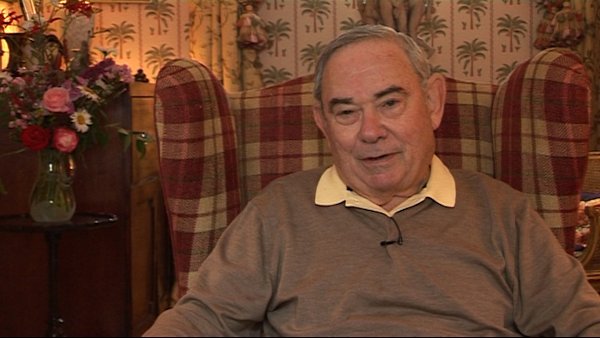NEXT STORY

Professor Charles M Pomerat
RELATED STORIES

NEXT STORY

Professor Charles M Pomerat
RELATED STORIES


|
Views | Duration | |
|---|---|---|---|
| 21. The history of the Wistar Institute | 116 | 02:12 | |
| 22. The Wistar rat colony | 104 | 02:42 | |
| 23. No stranger to the Wistar Institute | 92 | 02:18 | |
| 24. A difficult graduate year | 95 | 03:23 | |
| 25. The whale skeleton outside my lab | 79 | 02:08 | |
| 26. Isolating mycoplasma free in nature | 73 | 03:00 | |
| 27. The work of Edmund Farris | 241 | 03:18 | |
| 28. Opposition to artificial insemination | 151 | 01:51 | |
| 29. My first contact with virology | 80 | 01:52 | |
| 30. Moving to the University of Texas, Galveston | 70 | 01:57 |


My next step of course was to find a position. Well, Warren Steinbring, my boss at that time, about a year before I left, before I was finished, he decided to accept a job at the University of Texas, in Galveston, Texas, with a world famous cell culturist by the name of Charles Pomerat, who was a pioneer in cell culture. And Warren, because we were... by this time we were to be good friends, not only as a student and teacher, but actually very good friends, he discovered that there was a place for me in that laboratory, and I accepted that opportunity.
My wife and I travelled to Galveston, Texas, found a small apartment there. I believe by this time my wife was pregnant with the first of our five children, and because of various connections with Pen and the University of Texas, I recall that I was given the name of a woman paediatrician who could help with my wife and the newborn. And I arrived at the University of Texas in Galveston, technically I was part of the department of microbiology there, but... and I had a small lab in that department, but I also had a... I had a laboratory, not quite a laboratory, but a shared space I guess is the best way to put it, in the laboratory of Charles Pomerat.
Leonard Hayflick (b. 1928), the recipient of several research prizes and awards, including the 1991 Sandoz Prize for Gerontological Research, is known for his research in cell biology, virus vaccine development, and mycoplasmology. He also has studied the ageing process for more than thirty years. Hayflick is known for discovering that human cells divide for a limited number of times in vitro (refuting the contention by Alexis Carrel that normal body cells are immortal), which is known as the Hayflick limit, as well as developing the first normal human diploid cell strains for studies on human ageing and for research use throughout the world. He also made the first oral polio vaccine produced in a continuously propogated cell strain - work which contributed to significant virus vaccine development.
Title: Moving to the University of Texas, Galveston
Listeners: Christopher Sykes
Christopher Sykes is a London-based television producer and director who has made a number of documentary films for BBC TV, Channel 4 and PBS.
Tags: University of Texas Galveston, University of Pennsylvania, Warren Stinebring, Charles Pomerat
Duration: 1 minute, 57 seconds
Date story recorded: July 2011
Date story went live: 08 August 2012